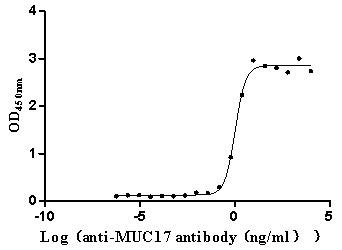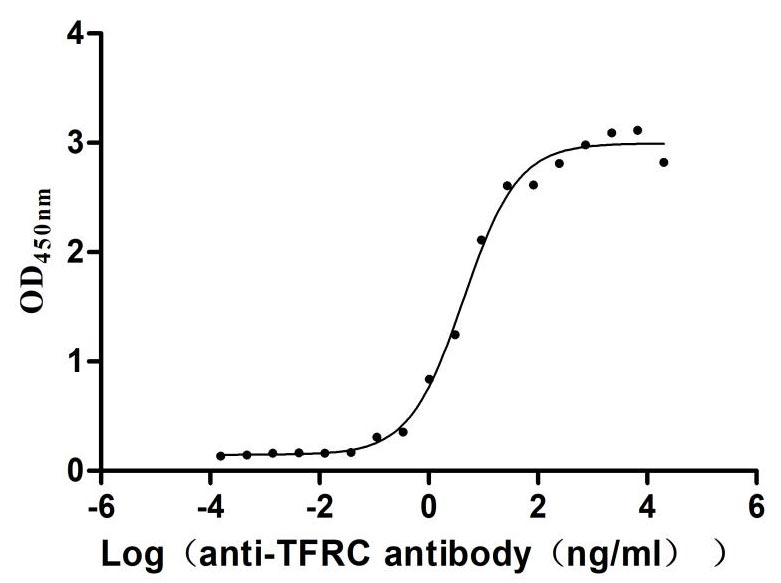Recombinant Human Transcription factor PU.1 (SPI1)
In Stock-
货号:CSB-EP022567HU
-
规格:¥1536
-
图片:
-
(Tris-Glycine gel) Discontinuous SDS-PAGE (reduced) with 5% enrichment gel and 15% separation gel.
-
Based on the SEQUEST from database of E.coli host and target protein, the LC-MS/MS Analysis result of CSB-EP022567HU could indicate that this peptide derived from E.coli-expressed Homo sapiens (Human) SPI1.
-
Based on the SEQUEST from database of E.coli host and target protein, the LC-MS/MS Analysis result of CSB-EP022567HU could indicate that this peptide derived from E.coli-expressed Homo sapiens (Human) SPI1.
-
-
其他:
产品详情
-
纯度:Greater than 85% as determined by SDS-PAGE.
-
基因名:
-
Uniprot No.:
-
别名:transcription factor spi1; 31 kDa Transforming Protein; 31 kDa-transforming protein; cb1086; Hematopoietic transcription factor PU.1; OF; oncogene spi1; PU.1; SFFV virus-induced murine erythroleukemia oncogene, mouse, homolog of; SFPI1; si:by184l24.2; SPI 1; SPI 1 proto oncogene; SPI A; Spi1; SPI1_HUMAN; Spleen focus forming virus (SFFV) proviral integration oncogene spi1; Spleen focus forming virus proviral integration oncogene spi1; Transcription factor PU.1
-
种属:Homo sapiens (Human)
-
蛋白长度:Full Length
-
来源:E.coli
-
分子量:35.1kDa
-
表达区域:1-270aa
-
氨基酸序列MLQACKMEGFPLVPPPSEDLVPYDTDLYQRQTHEYYPYLSSDGESHSDHYWDFHPHHVHSEFESFAENNFTELQSVQPPQLQQLYRHMELEQMHVLDTPMVPPHPSLGHQVSYLPRMCLQYPSLSPAQPSSDEEEGERQSPPLEVSDGEADGLEPGPGLLPGETGSKKKIRLYQFLLDLLRSGDMKDSIWWVDKDKGTFQFSSKHKEALAHRWGIQKGNRKKMTYQKMARALRNYGKTGEVKKVKKKLTYQFSGEVLGRGGLAERRHPPH
Note: The complete sequence including tag sequence, target protein sequence and linker sequence could be provided upon request. -
蛋白标签:N-terminal 6xHis-tagged
-
产品提供形式:Liquid or Lyophilized powder
Note: We will preferentially ship the format that we have in stock, however, if you have any special requirement for the format, please remark your requirement when placing the order, we will prepare according to your demand. -
缓冲液:Tris-based buffer,50% glycerol
-
储存条件:Store at -20°C/-80°C upon receipt, aliquoting is necessary for mutiple use. Avoid repeated freeze-thaw cycles.
-
保质期:The shelf life is related to many factors, storage state, buffer ingredients, storage temperature and the stability of the protein itself.
Generally, the shelf life of liquid form is 6 months at -20°C/-80°C. The shelf life of lyophilized form is 12 months at -20°C/-80°C. -
货期:3-7 business days
-
注意事项:Repeated freezing and thawing is not recommended. Store working aliquots at 4°C for up to one week.
-
产品描述:
To make this Recombinant Human SPI1 protein, the SPI1 gene was isolated at first and cloned into an expression vector. CUSABIO has built a mature recombinant protein platform. This Recombinant Human SPI1 protein was developed in the platform. It was expressed in E.coli at the region of 1-270aa of the Human SPI1 protein. N-terminal 6xHis tag was fused with the expression vector for affinity and purification purposes. The purity is 85%+ determined by SDS-PAGE.
SPI1 gene encodes the hematopoietic master TF PU.1. Previous studies define the clinical and molecular phenotype of this novel inherited PU.1 haploinsufficiency syndrome, which they term PU.1-mutated agammaglobulinemia (PU.MA). PU.1 is a key transcriptional regulator required in the development of multiple hematopoietic lineages. Somatic mutations in SPI1 have been reported in the context of acute myeloid leukemia. However germline variants impacting human SPI1 have not been previously identified. Mouse models of Spi1-deficient hematopoiesis indicate a crucial role for PU.1 in early lineage commitment, differentiation of multiple myeloid lineages, as well as B cell development. However, the precise effect of SPI1 loss on human hematopoiesis has remained unknown. PU.1 has been shown to have multifaceted roles in hematopoiesis, with reduced PU.1 levels causing B cell developmental arrest, but other specific PU.1 perturbations can favor B cell over myeloid lineage development. -
Datasheet & COA:Please contact us to get it.
相关产品
靶点详情
-
功能:Binds to the PU-box, a purine-rich DNA sequence (5'-GAGGAA-3') that can act as a lymphoid-specific enhancer. This protein is a transcriptional activator that may be specifically involved in the differentiation or activation of macrophages or B-cells. Also binds RNA and may modulate pre-mRNA splicing.
-
基因功能参考文献:
- these results suggest that attenuating PU.1 may be a valid therapeutic approach to limit microglial-mediated inflammatory responses in Alzheimer's disease PMID: 30124174
- PU.1 3'UTR attenuates TNFalphainduced proliferation and cytokine release of RAFLS by acting as a ceRNA for FOXO3 to regulate miR155 activity. PMID: 29693176
- Inhibition of endogenous miR-155 in B cells of rheumatoid arthritis patients restores PU.1 and reduces production of antibodies. PMID: 27671860
- PU.1 binds to OX40L promoter in dendritic cells. PMID: 27708417
- These results bring indirect evidence that leukemia develops from cells which have bypassed Spi1-induced senescence. Overall, our results reveal senescence as a Spi1-induced anti-proliferative mechanism that may be a safeguard against the development of acute myeloid leukemia. PMID: 28912174
- In contrast, expression of Spi1/PU.1 in a Fli1 producing erythroleukemia cell line in which fli1 is activated, resulted in increased proliferation through activation of growth promoting proteins MAPK, AKT, cMYC and JAK2 PMID: 28586009
- Data show that protein phosphatase-1 alpha (PP1alpha) is required to maintain checkpoint kinase 1 (CHK1) in a dephosphorylated state and for the accelerated replication fork progression in Spi1/PU.1 transcription factor-overexpressing cells. PMID: 28415748
- the results indicate that PU.1 may be a critical factor for the innate defense against A. fumigatus, and may therefore be a potential target for the prophylaxis and treatment of IPA. PMID: 28440496
- PU.1 supports TRAIL-induced cell death by inhibiting RelA-mediated cell survival and inducing DR5 expression. PMID: 28362429
- PU.1 directly activates the expression of HOTAIRM1 through binding to the regulatory region of HOTAIRM1 during granulocytic differentiation. PMID: 27146823
- PU.1 and IL-9 may play a role in AD pathogenesis and relate to disease severity and clinical eruption types. PMID: 28229452
- PU.1 has a role in tumor suppression in PEL and its down-regulation is associated with PEL development. PMID: 28481873
- PU.1-induced apoptosis in myeloma cells is associated with IRF4 downregulation and subsequent IRF7 upregulation. PMID: 28368411
- Most cases of histiocytic sarcoma expressed histiocytic markers CD68 (6 of 7 cases), CD163 (5 of 5 cases), and PU.1 (3 of 4 cases). PMID: 28805986
- findings highlight a unique role of SPI1 fusions in high-risk pediatric T cell acute lymphoblastic leukemia PMID: 28671687
- Alzheimer's disease heritability was enriched within the PU.1 cistrome, implicating a myeloid PU.1 target gene network in AD. PMID: 28628103
- expression of an essential mediator of neutrophil terminal differentiation, the ets transcription factor PU.1, was significantly decreased in Hbb(th3/+) neutrophils in beta-thalassemia PMID: 28325862
- RUNX1 overexpression induced partial DNA demethylation at SPI1 proximal promoter. PMID: 28376714
- This study demonstrated the novel role of PU.1 in the immune response to A. fumigatus through upregulation of Dectin-1 expression and its translocation to the nucleus in A. fumigatus-stimulated THP-1 cells. PMID: 27306059
- PU.1 is an important modulator of VDR signaling in monocytes. PMID: 28232093
- Forced FOG1 protein expression in K562 erythroleukemia cells induced the expression of SLC4A1 protein, but repressed that of transcription factor PU.1. PMID: 28216155
- Moreover, the expression of a cell proliferation marker Ki67 was significantly decreased in tumors from the mice not taking doxycycline, compared with that of tumors from the mice continuously taking doxycycline. The present data strongly suggest that PU.1 functions as a tumor suppressor of myeloma cells in vivo. PMID: 28347818
- we demonstrated that miR-22 promoted monocyte/macrophage differentiation, and MECOM (EVI1) mRNA is a direct target of miR-22 and MECOM (EVI1) functions as a negative regulator in the differentiation.The miR-22-mediated MECOM degradation increased c-Jun but decreased GATA2 expression, which results in increased interaction between c-Jun and PU.1 PMID: 27617961
- we conclude that PU.1 transactivates the pIII through direct binding to Ets-motifs in the promoter in pDCs PMID: 27105023
- Our results suggest the existence of a Vav1/PU.1/miR-142-3p network that supports all-trans retinoic acid -induced differentiation in acute promyelocytic leukemia -derived cells PMID: 27480083
- Our data suggest that E2A antagonism of PU.1 activity contributes to its ability to commit multipotential hematopoietic progenitors to the lymphoid lineages. PMID: 26942192
- This study showed that HCV infection might abrogate NK cytotoxic potential through altering PU.1, NKG2D receptor and perforin molecules. PMID: 26429314
- SPI1-GFI1B transcriptional network is an important regulatory axis in acute myeloid leukemia as well as in the development of erythroid versus myelomonocytic cell fate PMID: 26851695
- The GATA-1-mediated inhibition of PU.1 gene transcription in human AML-erythroleukemias mediated through the URE represents important mechanism that contributes to PU.1 downregulation and leukemogenesis that is sensitive to DNA demethylation therapy PMID: 27010793
- PU.1 downregulation was noted in B-CLL/SLL samples positive for the adverse prognostic markers CD38 and ZAP-70. PMID: 26261072
- PU.1 recruitment coupled with increased histone acetylation induces gene expression and activates a monocyte/macrophage transcriptional programme. PMID: 26126967
- This study demonstrated positive regulation of monocyte/macrophage differentiation by lnc-MC and uncovered an elaborate regulation mechanism composed of PU.1, lnc-MC, miR-199a-5p, and ACVR1B. PMID: 26149389
- Collectively, IMiDs exert demethylation activity through inhibiting DNMT1, 3a, and 3b, and up-regulating PU.1 expression, which may be one of the mechanisms of the anti-myeloma activity of IMiDs. PMID: 26657848
- Loss of PU.1 expression is associated with Hepatocellular Carcinoma. PMID: 25987019
- PU.1 suppressive target gene, metallothionein 1G, inhibits retinoic acid-induced NB4 cell differentiation. PMID: 25072246
- This review summarizes current knowledge and ideas of molecular mechanisms by which PU.1 controls hematopoiesis and suppresses leukemia. [review] PMID: 25205721
- A novel network has been described in acute myeloid leukemia in which FLT3-ITD signaling induces oncogenic miR-155 by p65 and STAT5 thereby targeting transcription factor PU.1. PMID: 25092144
- The increased CITED2 expression in acute myeloid leukemia results in better hematopoietic stem cell survival, lower PU.1 levels, and perturbed myeloid differentiation program that contributes to leukemia persistence. PMID: 25184385
- Runx-dependent PU.1 chromatin interaction and transcription of PU.1 are essential for both normal and leukemia stem cells. PMID: 25185713
- PU.1- targeted genes undergo Tet2-coupled demethylation and DNMT3b-mediated methylation in monocyte-to-osteoclast differentiation. PMID: 24028770
- DNA complex may be relevant to an emerging role of PU.1, but not Ets-1, as a pioneer transcription factor in vivo PMID: 24952944
- Data show that CCCTC-binding factor (CTCF) together with ISWI ATPase SMARCA5 and members of the Cohesin complex associate with the SPI1 protein is disrupted in acute myeloid leukemia (AML) blasts. PMID: 24498324
- The PU.1-regulated MAP1S gene is implicated in neutrophil differentiation and autophagy control. PMID: 25043887
- hnRNP K and PU.1 act synergistically during granulocytic differentiation, hnRNP K seems to have a negative effect on PU.1 activity during monocytic maturation PMID: 25005557
- Data indicate that transcription factors RUNX1 and PU.1 cooperated to exchange corepressors for coactivators, and deficiency of RUNX1, frequent in leukemia, caused aberrant recruitment of specific corepressors instead of coactivators to PU.1. PMID: 24695740
- IL-32theta; reduces PKCdelta-mediated phosphorylation of PU.1, resulting in attenuation of IL-1beta production PMID: 24996056
- HSF1 appears as a fine-tuning regulator of SPI1/PU.1 expression at the transcriptional and post-translational levels during macrophage differentiation of monocytes. PMID: 24504023
- our findings demonstrate that PU.1 contributes to the development of MLL leukemia, partially via crosstalk with the MEIS/HOX pathway. PMID: 24445817
- Given the importance of C/EBPs and PU.1 in myeloid development, these results, thus, suggest that restoration of the normal function of the myeloid cell transcriptional machinery is a major molecular mechanism underlying the differentiation induction PMID: 24379003
- Mice with PU.1 deficiency in T cells were protected from colitis, whereas treatment with antibody to IL-9 suppressed colitis PMID: 24908389
显示更多
收起更多
-
亚细胞定位:Nucleus.
-
蛋白家族:ETS family
-
数据库链接:
HGNC: 11241
OMIM: 165170
KEGG: hsa:6688
STRING: 9606.ENSP00000227163
UniGene: Hs.502511
Most popular with customers
-
Recombinant Human Heat-stable enterotoxin receptor (GUCY2C), partial (Active)
Express system: Mammalian cell
Species: Homo sapiens (Human)
-
Recombinant Human Plexin-B1 (PLXNB1), partial (Active)
Express system: Mammalian cell
Species: Homo sapiens (Human)
-
Recombinant Human Poliovirus receptor (PVR) (I340M), partial (Active)
Express system: Mammalian cell
Species: Homo sapiens (Human)
-
Recombinant Human Mucin-17 (MUC17), partial (Active)
Express system: Mammalian cell
Species: Homo sapiens (Human)
-
Recombinant Human C-C chemokine receptor type 8 (CCR8)-VLPs (Active)
Express system: Mammalian cell
Species: Homo sapiens (Human)
-
Recombinant Human Transferrin receptor protein 1 (TFRC), partial (Active)
Express system: Mammalian cell
Species: Homo sapiens (Human)
-
Recombinant Human Cadherin-17 (CDH17), partial (Active)
Express system: Mammalian cell
Species: Homo sapiens (Human)
-
Recombinant Human Killer cell immunoglobulin-like receptor 3DL2 (KIR3DL2), partial (Active)
Express system: Mammalian cell
Species: Homo sapiens (Human)

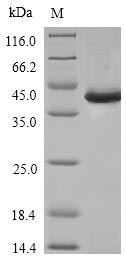
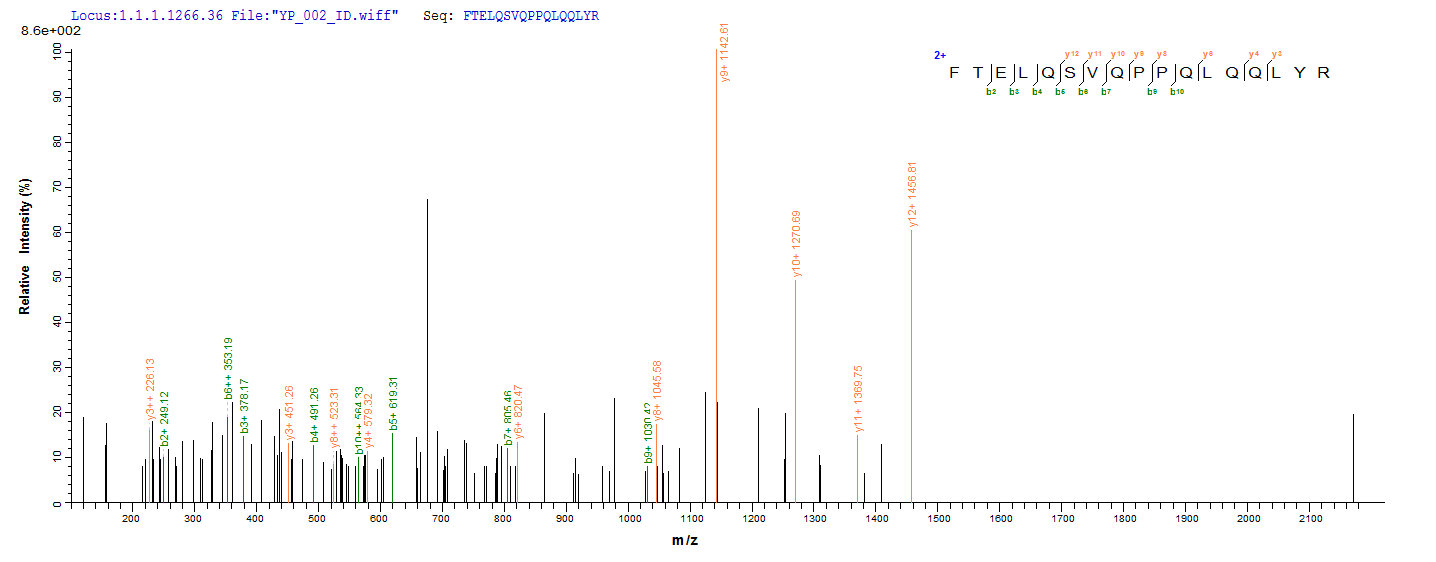



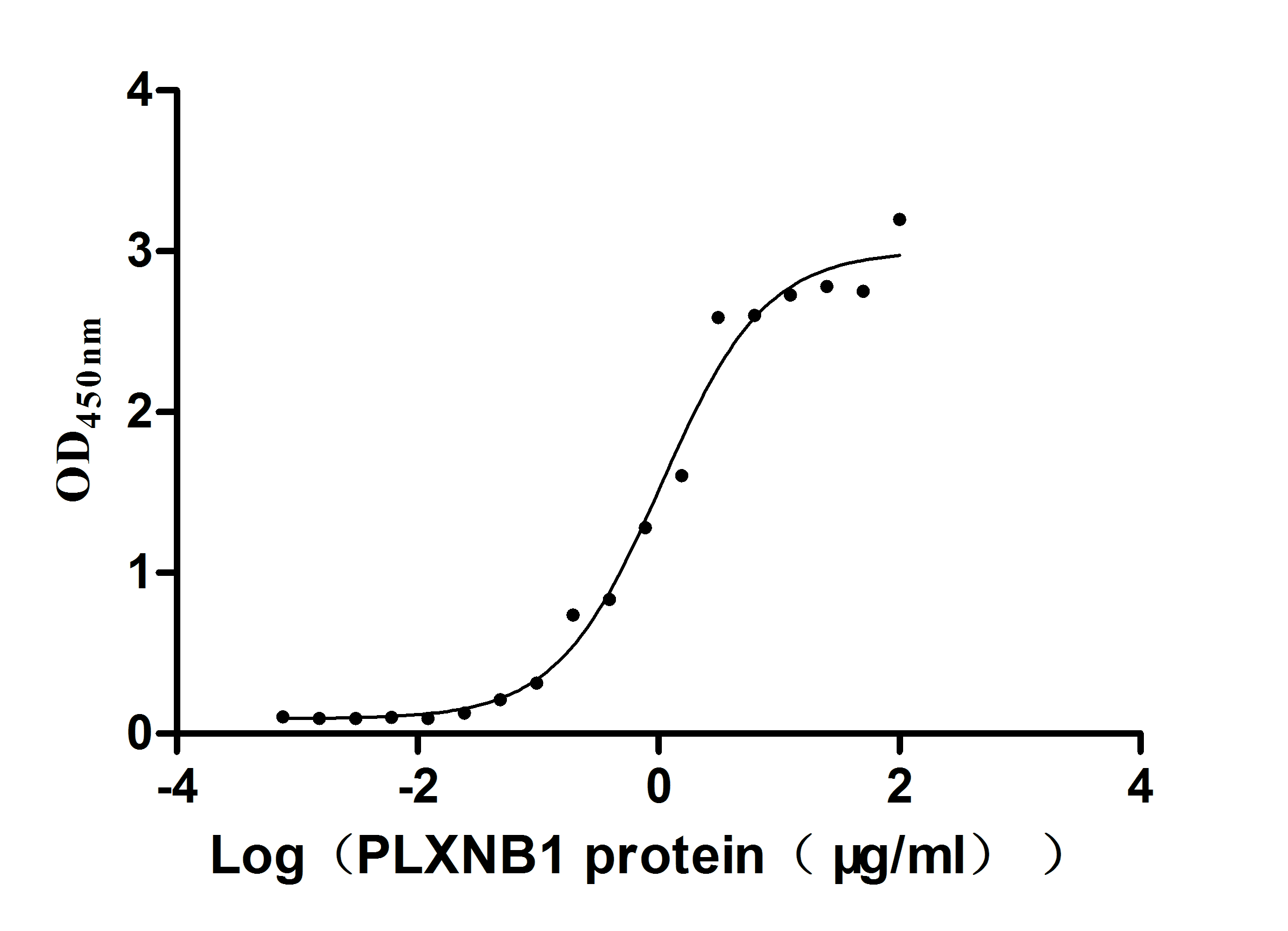
-AC1.jpg)
